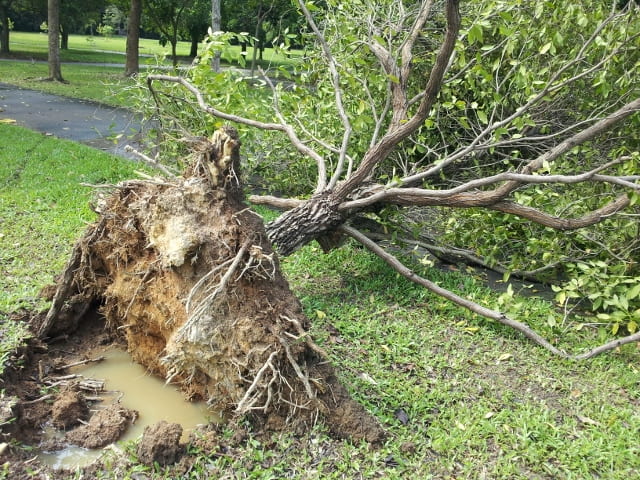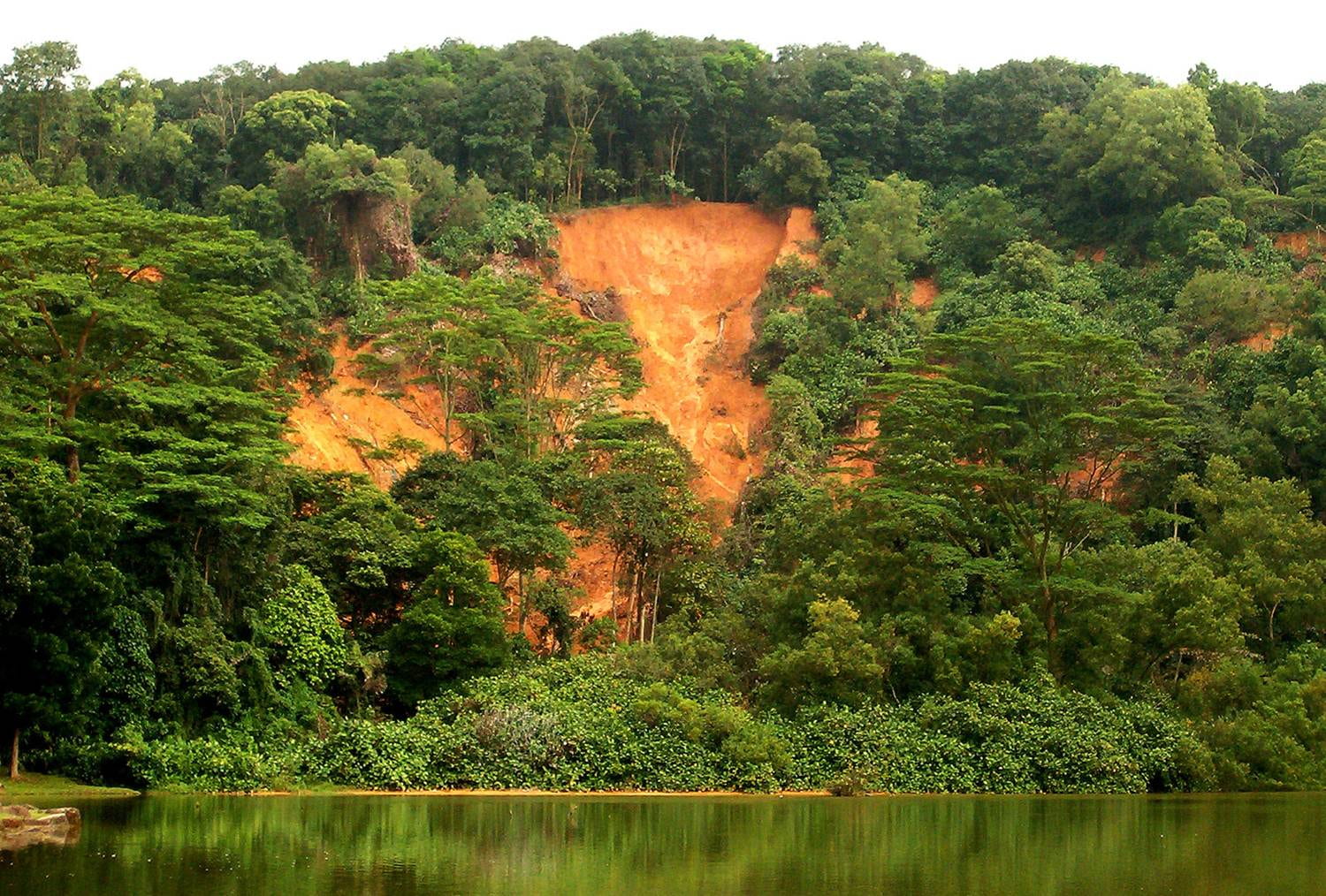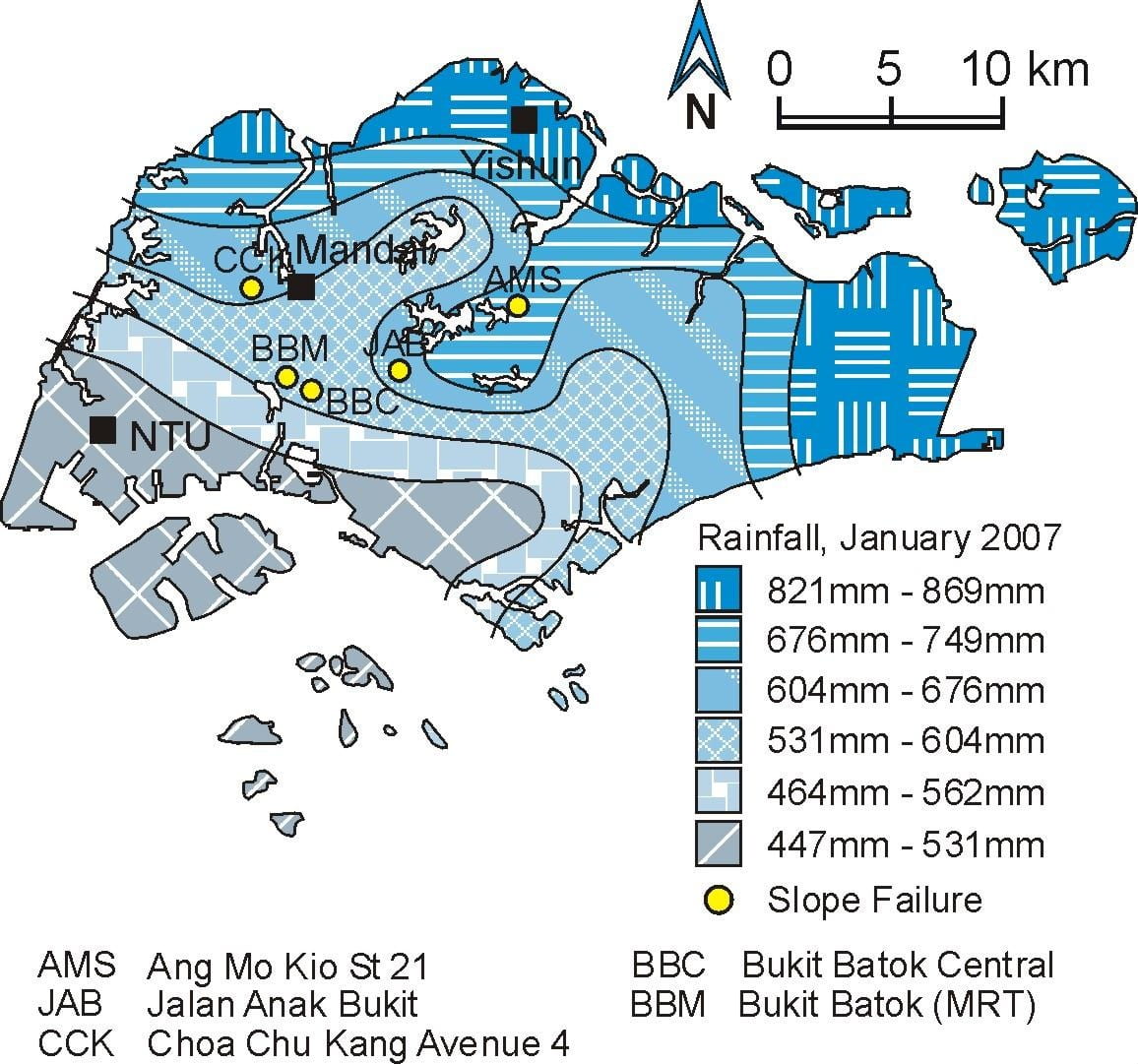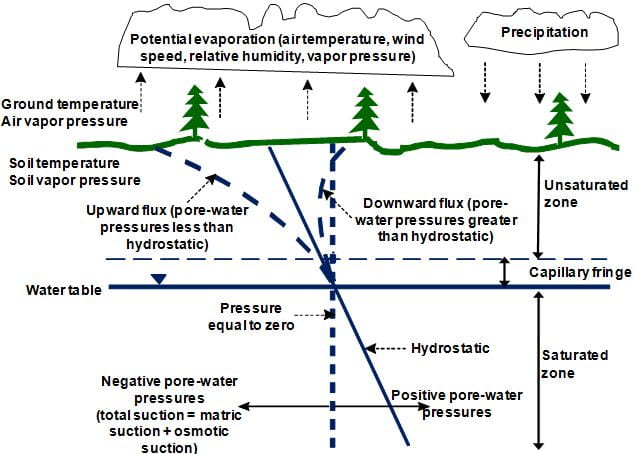Unsaturated Soil Mechanics for Sustainable Urban Living
Impact of Climate
Slope Stability
Effect of Rainfall on Tree Stability
Preventive Measures
Unsaturated Soil Mechanics
Soil Water Characteristic Curve
Permeability Function for Unsaturated Soil
Shear Strength for Unsaturated Soil
Seepage Analyses
Stability Analyses
About this Digital Project
Videorecordings
Impact of Climate
Rainfall-induced Slope failures
Left: Slope failure at NTU Campus (1994), Rahardjo et al 2001. Right: Slope failure at Bukit Batok, Singapore (2006), Rahardjo et al 2007.
Left: Distribution of rainfall and slope failures during the month of December 2006 (after NEA, 2006), Rahardjo et al 2007. Right:Distribution of rainfall and slope failures during the month of January 2007 (after NEA, 2007), Rahardjo et al 2007
Tree Failures

Left: Tree failure at Fourth Ave (2014), Rahardjo et al 2016. Right: Tree failure at Pasir Ris, Singapore (2012), Rahardjo et al 2016.
Effect of climate on the behaviour of unsaturated soil (after Fredlund and Rahardjo, 1993)
References
- Rahardjo, H., Leong, E. C., Qin, Q. S., Fong, Y. K., Lee, D. T. T., Wee, J. D., Harnas, F. R., Min, R. and Amalia, N. (2016). “Effect of rainfall on tree stability”. NTU-NParks Collaborative Research Report, Nanyang Technological University, Singapore, 315 p.
- Rahardjo, H., Satyanaga, A., Leong, E. C., Ng, Y. S., Foo, M. D. and Wang, C. L. (2007). “Slope failures in Singapore due to rainfall.” Proceedings of 10th Australia New Zealand Conference on Geomechanics “Common Ground”, Brisbane, Australia, 21-24 October, 704-709. handle
- Rahardjo, H., Leong, E. C., Rezaur, R. B. (2001). “Instrumented slopes for the study of rainfall-induced slope failures.” INVITED PRESENTATION in Workshop on “Rain-induced Landslides.” Organised by the Asian Technical Committee on Geotechnology for Natural Hazards (ATC3), Proceedings of the 14th Southeast Asian Geotechnical Conference, Hong Kong, 10-14 December, Vol.3, 1-7.
- Toll, D. G., Rahardjo, H., Leong, E. C. (1999). “Landslides in Singapore.”Proceedings of 2nd International Conference on Landslides, Slope Stability and the Safety of Infra-Structures, Singapore, July 27-28, 269-276.
- Fredlund, D.G. and Rahardjo, H. (1993). Soil mechanics for unsaturated soils, John Wiley & Sons, New York, 517 pages (ISBN 0-471-85008-X). doi
- Tan, S. B., Tan, S L., Lim, T. L. and Yang, K. S. (1987). “Landslides Problems and their Control in Singapore”. Proceedings of the 9th Southeast Asian Geotechnical Conference, Bangkok, Thailand, 125-136.
- Brand, E.W. (1984). “State-Of-The-Art Report of Landslides in Southeast Asian”. Proceedings of the 4th International Symposium on Landslides. Toronto, Canada, 17-37.
Rainfall-induced Slope failures
Brand (1984) indicated that many residual soil slopes around the world failed due to rainfalls. In Singapore, fourteen slope failures were observed between December 2006 and January 2007 during heavy rainfall period in Singapore. Toll et al (1999) and Tan et al (1987) also observed many slope failures occurred during heavy rainfalls in Singapore. Slope failures may damage and destroy residential, commercial properties and agricultural land. Threats to the environment due to slope failures may create a risk that affects environmental sustainability. The cost of repairing slopes is more expensive than preventive measures of the slope. Therefore, engineers must have good understanding of the mechanism leading to rainfall-induced slope failures. Hence, suitable action can be taken to prevent slope from failures.
Tree Failures
A major part of the Singapore national identity is defined by the lushness and close distribution of her trees and vegetation within an urban landscape. As a “Garden City”, almost fifty percent of Singapore is covered by greenery (NParks, 2012) and trees form an essential part of the greenery. Rahardjo et al (2009) concluded that the matric suction contributes to the shear strength and stability of trees. As the groundwater table rises due to the rainwater infiltration and the rising of the sea level, the pore-water pressure above the groundwater table increases (matric suction decreases), and the additional shear strength due to matric suction decreases or even disappears. The decrease in shear strength resulted in uprooted trees in many cases. Uprooted trees can be dangerous since they may cause damage to property (e.g. houses and vehicles) and infrastructure and may also cause injury or loss of life.





